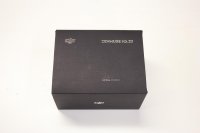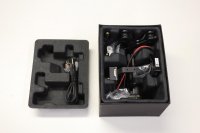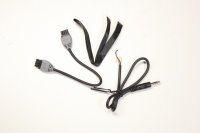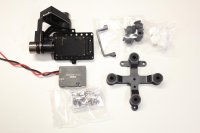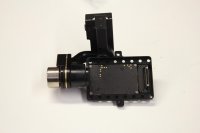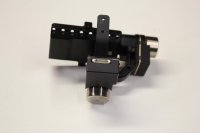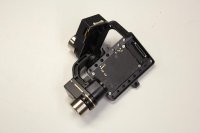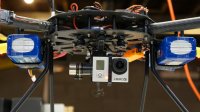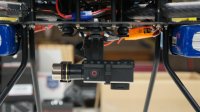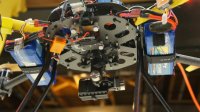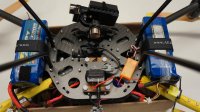Bartman
Welcome to MultiRotorForums.com!!
Rumor has it this gimbal has been discontinued which I think is a big mistake for DJI to make. Here's the review anyway, I'll let DJI know what I think of their decision and we'll see about changing their minds..............and away we go
DJI H3-2D gimbal review
The last time I flew a dedicated GoPro heli it was a first generation Xaircraft X650 with a GoPro Hero HD and the footage looked more like the camera was mounted to a paint shaker than a stabilized multi-rotor heli and gimbal. It was bad! Surf the internet for only a few minutes though and you’ll find video after video demonstrating how far we’ve come (and to be fair to Xaircraft, they’ve come a long way also!) in a relatively short amount of time. We’ve got the pioneering AlexMos brushless gimbal controller to thank for much of this which has led to advancements by other designers using the same basic concepts with very impressive results.
DJI’s H3-2D camera gimbal for the GoPro 3/3+ is an example of a non-AlexMos 2D gimbal and, for DJI flight control users, it’s an easy way to get smooth GoPro footage almost immediately. Note that the H3-2D is only compatible with DJI flight control systems (NAZA-Lite, NAZA-M V2, NAZA-M V1 with V2 mods, WKM with V2 mods, and A2). The V2 mods include the PMU, Remote LED, and Can-Bus cable from the NAZA-M V2. Without those V2 components the NAZA-M V1 and WKM are not compatible with the H3-2D.
The H3-2D offers two axis stabilization, tilt and roll, and provides the user with the ability to remotely adjust the camera’s tilt. The mount does not allow the user to pan the camera (left-right movement) as it is rigidly mounted to the helicopter pointing forward.
View attachment 17572View attachment 17573View attachment 17574View attachment 17575
DJI H3-2D gimbal review
The last time I flew a dedicated GoPro heli it was a first generation Xaircraft X650 with a GoPro Hero HD and the footage looked more like the camera was mounted to a paint shaker than a stabilized multi-rotor heli and gimbal. It was bad! Surf the internet for only a few minutes though and you’ll find video after video demonstrating how far we’ve come (and to be fair to Xaircraft, they’ve come a long way also!) in a relatively short amount of time. We’ve got the pioneering AlexMos brushless gimbal controller to thank for much of this which has led to advancements by other designers using the same basic concepts with very impressive results.
DJI’s H3-2D camera gimbal for the GoPro 3/3+ is an example of a non-AlexMos 2D gimbal and, for DJI flight control users, it’s an easy way to get smooth GoPro footage almost immediately. Note that the H3-2D is only compatible with DJI flight control systems (NAZA-Lite, NAZA-M V2, NAZA-M V1 with V2 mods, WKM with V2 mods, and A2). The V2 mods include the PMU, Remote LED, and Can-Bus cable from the NAZA-M V2. Without those V2 components the NAZA-M V1 and WKM are not compatible with the H3-2D.
The H3-2D offers two axis stabilization, tilt and roll, and provides the user with the ability to remotely adjust the camera’s tilt. The mount does not allow the user to pan the camera (left-right movement) as it is rigidly mounted to the helicopter pointing forward.
View attachment 17572View attachment 17573View attachment 17574View attachment 17575
Attachments
Last edited by a moderator:

